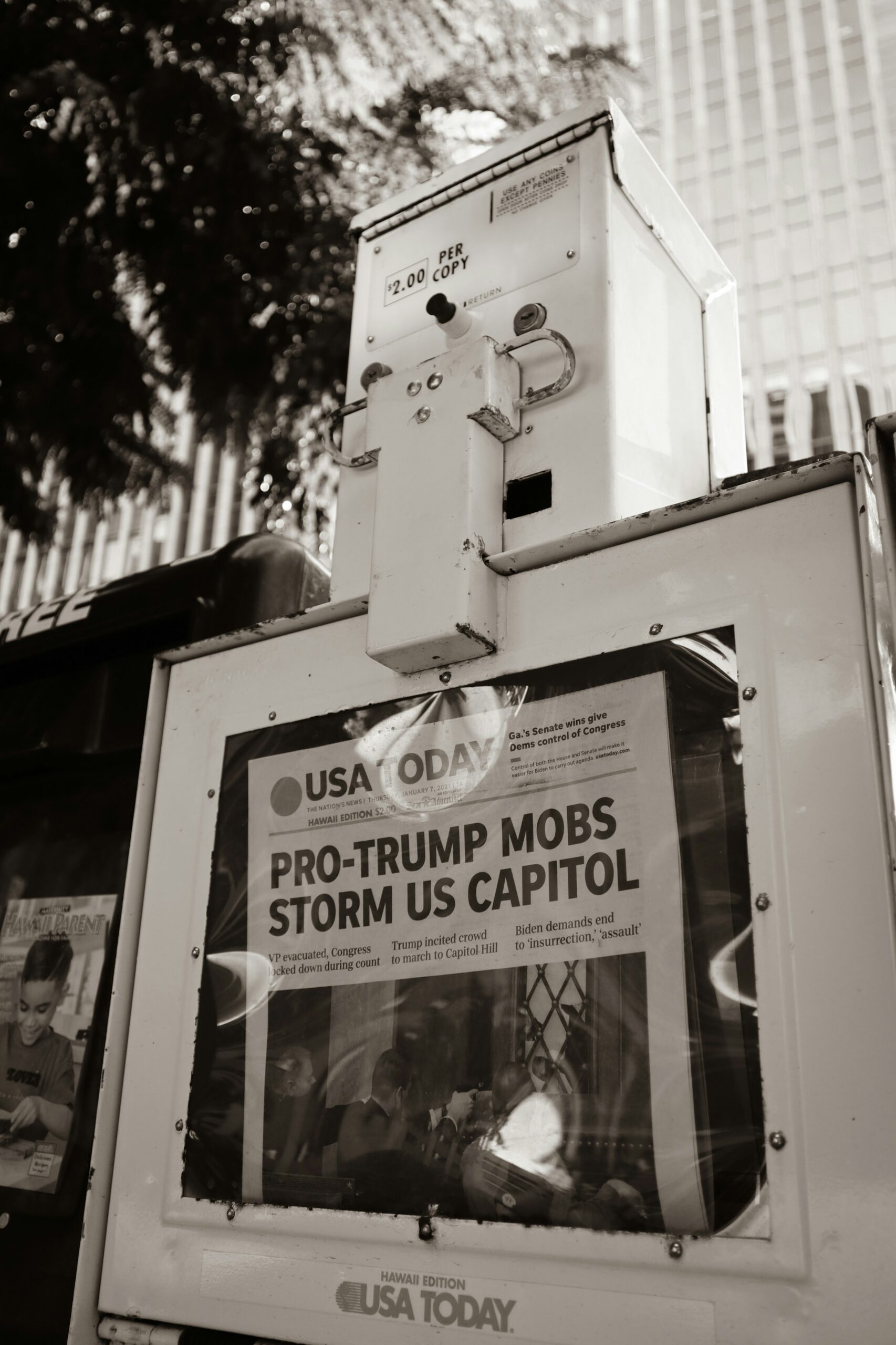Introduction to the Announcement
In a pivotal moment for the upcoming US election, former President Donald Trump officially announced JD Vance as his running mate. The announcement was made during a high-profile rally in Ohio, a state that has been a political battleground in recent elections. The choice of venue underscores the strategic importance of Ohio in the electoral map and sets the stage for an intense campaign season.
JD Vance, a venture capitalist and author of the bestselling memoir “Hillbilly Elegy,” has emerged as a prominent figure in conservative circles. His alignment with Trump is seen as a significant move to consolidate support among the Republican base. The announcement was met with enthusiastic applause from supporters, indicating a strong initial reception from the party faithful.
The pairing of Trump and Vance is significant for several reasons. First, it signals a continuation of Trump’s influence within the Republican Party, suggesting that his brand of populism will remain a central theme in the campaign. Second, Vance’s background and outspoken views on issues like economic inequality and the opioid crisis resonate with a broad swath of voters, particularly in the Rust Belt states. This could potentially broaden the appeal of the Trump-Vance ticket beyond the traditional Republican base.
The announcement also marks a notable moment in the political landscape, as it could reshape the dynamics of the upcoming election. With Trump bringing his extensive campaign experience and Vance offering fresh perspectives and policy ideas, the duo aims to present a formidable challenge to their opponents. Observers and analysts will be closely watching how this partnership evolves and impacts voter sentiment in the months leading up to the election.
Who is JD Vance?
JD Vance, an influential figure in American politics and literature, has garnered significant attention for his compelling life story and critical insights into the socio-economic challenges faced by many Americans. Born on August 2, 1984, in Middletown, Ohio, Vance’s upbringing was marked by the struggles of a working-class family in a region often referred to as the “Rust Belt.” His early life was a tapestry of experiences that shaped his worldview, characterized by economic instability and a deep connection to Appalachian culture.
Vance’s academic journey reflects his resilience and determination. He graduated from Middletown High School and went on to serve in the United States Marine Corps, where he completed a tour of duty in Iraq. Following his military service, Vance pursued higher education, earning a Bachelor’s degree in Political Science and Philosophy from Ohio State University. He furthered his education at Yale Law School, where he was mentored by prominent law professor Amy Chua, an experience that significantly influenced his intellectual development.
JD Vance’s rise to prominence is largely attributed to his memoir, ‘Hillbilly Elegy: A Memoir of a Family and Culture in Crisis,’ published in 2016. The book offers a poignant and personal account of his family’s struggles, shedding light on the broader socio-economic issues plaguing rural America. ‘Hillbilly Elegy’ quickly became a bestseller, resonating with readers and critics alike for its raw honesty and insightful commentary on class and culture. The memoir’s success catapulted Vance into the national spotlight, establishing him as a voice for the often-overlooked rural working class.
Transitioning from author to political figure, JD Vance entered the political arena with a focus on addressing the systemic issues he outlined in his book. His political career is marked by his candidacy for the U.S. Senate from Ohio, during which he emphasized economic revitalization, education reform, and healthcare improvement. Vance’s background as a veteran, lawyer, and author brings a unique perspective to the political landscape, positioning him as a notable figure in contemporary American politics.
JD Vance’s selection as Donald Trump’s running mate for the upcoming U.S. election underscores his potential to galvanize support among working-class voters and those disillusioned with the current political establishment. His life story, professional accomplishments, and political vision make him a significant addition to the ticket, promising a dynamic and impactful campaign.
Trump and Vance: The Partnership
The partnership between Donald Trump and JD Vance is a notable development in the landscape of American politics. Both figures are recognized for their distinct yet complementary political ideologies that have resonated with a substantial segment of the electorate. Trump’s populist approach, characterized by his “America First” policy, aligns closely with Vance’s advocacy for addressing the concerns of the working-class population. Their mutual emphasis on economic nationalism and stringent immigration policies underscores a shared vision for the nation’s future.
However, there are areas where Trump and Vance may diverge. Vance, originally a critic of Trump, has evolved in his stance over time. This evolution reflects the broader shifts within the Republican Party, where traditional conservatism is increasingly intertwined with populist sentiments. Despite initial disagreements, Vance’s eventual endorsement of Trump signals a strategic alignment that has matured through mutual recognition of shared goals.
Previous interactions between Trump and Vance have been marked by public endorsements and collaborations. Trump’s endorsement of Vance during his Senate run in Ohio was a significant boost, highlighting the former President’s influential role within the Republican Party. This endorsement not only solidified Vance’s position but also showcased Trump’s ability to mobilize his base in support of candidates who align with his vision. Their collaborative efforts in various campaign events have further cemented their partnership, creating a unified front for the upcoming election.
The strategic advantages of this partnership are multifaceted. Trump’s established base of loyal supporters provides a solid foundation for campaign momentum, while Vance brings a fresh perspective and appeal to younger, more policy-focused voters. This combination broadens their campaign’s reach, appealing to a wider demographic. Additionally, Vance’s background as an author and venture capitalist complements Trump’s business-oriented approach, potentially attracting voters interested in economic reform and innovation.
In essence, the Trump-Vance partnership represents a strategic alignment of ideologies and strengths, aimed at consolidating support and addressing the evolving priorities of the American electorate. Their collaboration signifies a calculated effort to harness their combined influence for a formidable campaign presence.
Policy Alignment and Key Issues
Donald Trump and JD Vance’s alignment on key policy issues forms a cornerstone of their political synergy. Their unified stance on immigration, the economy, healthcare, and foreign policy underscores a shared vision that aims to resonate with a broad spectrum of voters.
On immigration, both Trump and Vance advocate for stringent border control measures. They emphasize the necessity of securing national borders to curb illegal immigration and enhance public safety. Their policies propose a reinforced border wall, increased funding for border patrol, and stricter visa regulations. This hardline approach seeks to appeal to voters concerned about national security and job competition.
Regarding the economy, Trump and Vance share a pro-business, deregulation-driven outlook. They prioritize tax cuts to stimulate business growth and advocate for reducing federal regulations that they believe hinder economic expansion. Their economic agenda promises to bolster job creation and support small businesses, aiming to restore the economic momentum experienced during Trump’s previous tenure. This economic vision is likely to attract voters focused on financial prosperity and job security.
In healthcare, both leaders are vocal critics of the Affordable Care Act. They propose an alternative healthcare system that emphasizes market-driven solutions and increased competition among providers to lower costs. Trump and Vance advocate for health savings accounts and interstate insurance sales to broaden consumer choice. Their healthcare stance is designed to appeal to voters seeking efficient and cost-effective healthcare solutions.
On the front of foreign policy, Trump and Vance champion a robust national defense and a focus on American interests. They support maintaining a strong military presence globally while advocating for fair trade deals that prioritize American workers. Their foreign policy approach underscores a commitment to national sovereignty and economic patriotism, likely resonating with voters who prioritize a strong international stance.
Collectively, the Trump-Vance platform integrates these policy positions into a cohesive narrative aimed at addressing the concerns of their voter base. Their combined efforts seek to shape the political discourse by presenting a clear and decisive agenda as the election approaches.
Vance’s Appeal to Voters
JD Vance’s selection as a running mate for the upcoming US election introduces a candidate who resonates deeply with several key voter demographics. His background and narrative as the author of “Hillbilly Elegy” have granted him significant popularity among rural and working-class voters. Vance’s personal story, marked by overcoming adversity and achieving success, mirrors the struggles and aspirations of many in these communities. This connection is likely to fortify voter turnout in rural areas, where his authenticity and relatability can galvanize support.
Moreover, Vance has demonstrated an ability to engage younger conservatives, a group often seen as critical for the future of the Republican Party. His stance on various social and economic issues, coupled with his adept use of social media platforms, positions him as a contemporary figure within the conservative movement. This digital-savvy approach not only broadens his reach but also ensures his message resonates with a generation that values direct and unfiltered communication.
In addition to his appeal to rural and younger voters, JD Vance also taps into the sentiments of those disillusioned with the current political establishment. His critiques of both parties and his outsider status align him with the populist wave that has grown in recent years. Voters who feel disenfranchised or skeptical of traditional political figures may find Vance’s candidacy refreshing and more attuned to their concerns.
However, Vance’s appeal is not without challenges. Broadening his appeal beyond these core groups will require strategic efforts. His relatively recent entry into politics means he lacks the extensive political experience and established networks that some voters might prefer. Additionally, his strong opinions and past statements may alienate moderate or undecided voters. Addressing these challenges effectively will be crucial for Vance to expand his support base and strengthen his position as a viable running mate in the forthcoming election.
Reactions from the Political Arena
The announcement of JD Vance as Donald Trump’s running mate has elicited a range of reactions from across the political spectrum. Within the Republican Party, the decision has been met with a mix of endorsements and criticisms. Key figures such as Senator Lindsey Graham and House Minority Leader Kevin McCarthy have expressed their support, emphasizing Vance’s alignment with Trump’s vision and policies. They argue that Vance’s inclusion on the ticket will energize the Republican base, particularly in swing states where his appeal to working-class voters could be pivotal.
Conversely, some Republicans have voiced reservations. Critics within the party, including Senator Mitt Romney and former Governor John Kasich, have questioned Vance’s relatively short political career and his previous criticisms of Trump. These dissenting voices suggest that the choice might alienate moderate Republicans and independents, potentially jeopardizing the party’s chances in the general election.
Democratic opponents have been quick to respond. Leading figures such as President Joe Biden and Vice President Kamala Harris have criticized the pick, framing it as a continuation of divisive politics. Democratic National Committee Chair Jaime Harrison labeled the selection as a “desperate move,” arguing that it underscores the Republican Party’s shift towards populism and away from traditional conservative values.
Political analysts are divided on the potential impact of this announcement. Some believe that JD Vance’s fresh perspective and populist rhetoric could invigorate the Republican campaign, particularly among disaffected voters. Others contend that his controversial statements and lack of extensive political experience might prove to be liabilities. Analysts also point out that this decision could reshape the election dynamics, prompting both parties to recalibrate their strategies.
Overall, the selection of JD Vance as Trump’s running mate has introduced a new layer of complexity to the upcoming election, with both potential advantages and significant risks for the Republican ticket. As the campaign progresses, the true impact of this choice will become more apparent, influencing voter perceptions and strategic decisions on both sides.
Historical Context and Precedents
The selection of JD Vance as Donald Trump’s running mate for the upcoming US election is a strategic choice that resonates within the rich tapestry of American political history. Presidential candidates have long chosen their vice-presidential counterparts with an eye towards balancing their ticket, appealing to broader electorates, or shoring up perceived weaknesses. This practice, evident throughout US history, offers insightful parallels and contrasts to the Trump-Vance pairing.
Historically, vice-presidential picks have been pivotal in shaping the dynamics of presidential campaigns. For instance, in 1960, John F. Kennedy’s selection of Lyndon B. Johnson was instrumental in securing the Southern vote, which was crucial for Kennedy’s narrow victory. Similarly, in 2008, Barack Obama’s choice of Joe Biden brought experience and foreign policy expertise to the ticket, complementing Obama’s message of change and hope.
Comparatively, Trump’s selection of Vance mirrors some of these historical precedents while also charting new territory. Vance, a venture capitalist and author of “Hillbilly Elegy,” brings a unique blend of populist appeal and intellectual acumen. This combination is reminiscent of George H.W. Bush’s choice of Dan Quayle in 1988, a younger running mate who resonated with a different demographic. However, Vance’s appeal to working-class voters and his outsider status also echo Trump’s own 2016 campaign, suggesting a continuation of the anti-establishment sentiment that defined Trump’s first run.
Vice-presidential picks have undoubtedly influenced election outcomes. The selection of Sarah Palin by John McCain in 2008, for instance, energized the conservative base but also raised questions about her readiness, affecting the overall campaign. The Trump-Vance ticket, therefore, must navigate the complex interplay of appeal, credibility, and political strategy. Whether this pairing will sway undecided voters or consolidate Trump’s base remains to be seen, but it undeniably fits within the broader narrative of strategic vice-presidential selections in US electoral history.
Implications for the Election Campaign
The announcement of JD Vance as Donald Trump’s running mate is poised to significantly impact the dynamics of the upcoming election campaign. This strategic move could alter both the Trump campaign’s approach and that of their opponents. JD Vance, known for his articulate stance on various socio-economic issues, brings a fresh perspective that may appeal to a broader segment of voters. His inclusion on the ticket could potentially energize the base, particularly among those who value his background and views.
For the Trump campaign, incorporating Vance’s strengths could mean a shift towards more nuanced policy discussions, with a heightened focus on economic revitalization and social mobility—issues that Vance has passionately advocated for. This alignment might resonate well in key battleground states, particularly in the Rust Belt, where economic concerns are paramount. It is likely that the campaign messaging will now emphasize a narrative of economic reform and opportunity, leveraging Vance’s authentic connection to working-class voters.
Voter turnout could also be affected by this announcement. The presence of JD Vance on the ticket may galvanize undecided voters and those disillusioned with the current political climate. His appeal to younger voters and independents, who may be swayed by his personal story and policy positions, could prove crucial in a tight race. Meanwhile, the opposition will need to recalibrate their strategies, possibly by highlighting contrasts in experience or policy to counter the new dynamic introduced by Vance.
In key battleground states, the addition of Vance could tip the scales. States like Ohio, Pennsylvania, and Michigan—regions that have experienced significant economic challenges—might see a renewed focus from the Trump campaign, aiming to harness the appeal of Vance’s message. This could compel the opposition to intensify their efforts in these regions, potentially leading to a more competitive race.
Overall, the selection of JD Vance as a running mate signals a strategic pivot that could redefine the contours of the election campaign. It underscores the Trump campaign’s intent to appeal to a broader electorate and address critical economic issues head-on, setting the stage for a potentially transformative election race.



